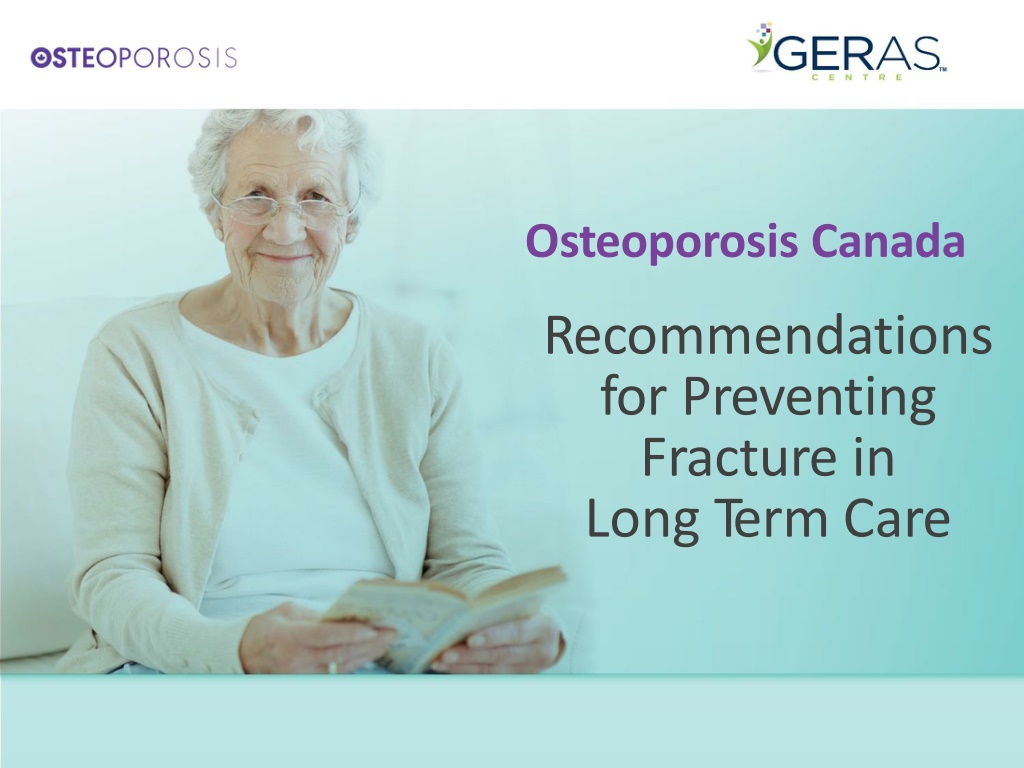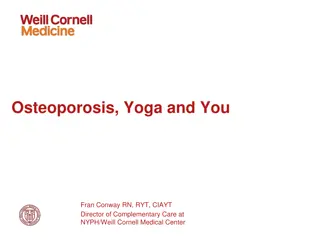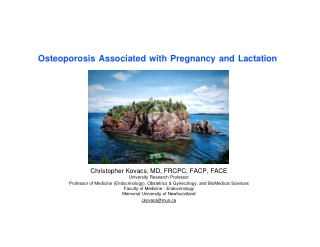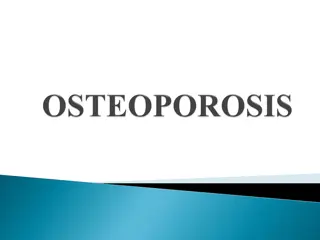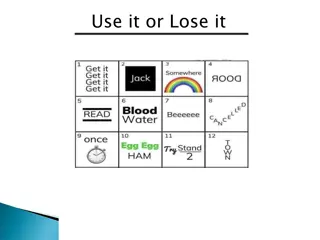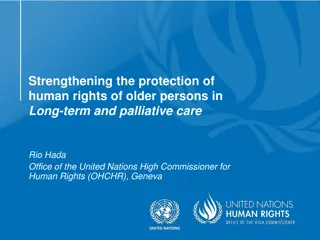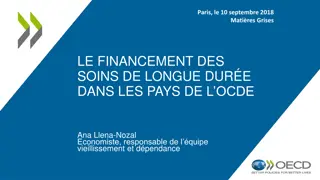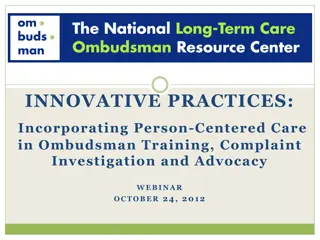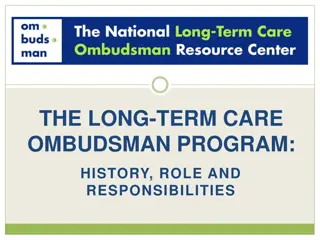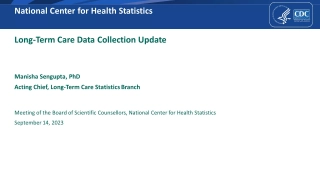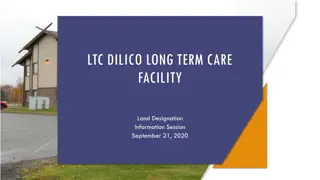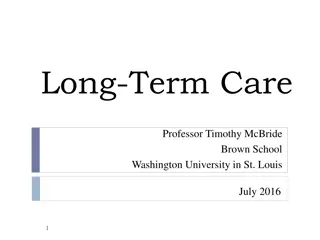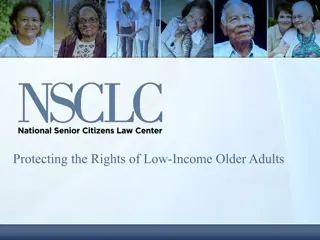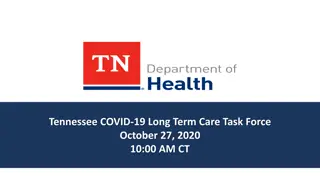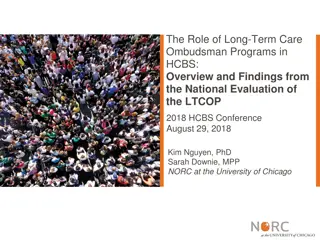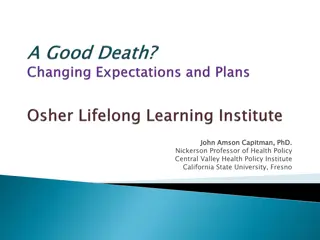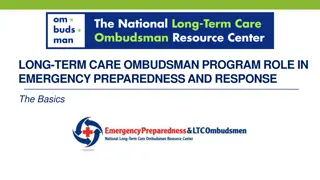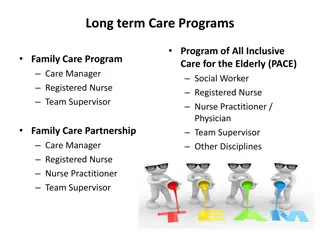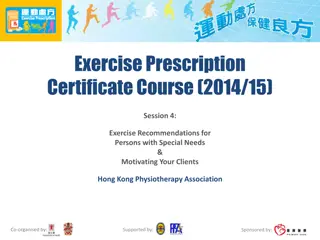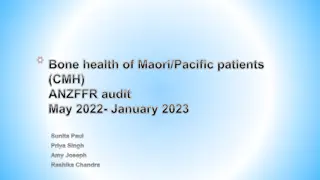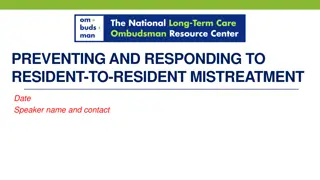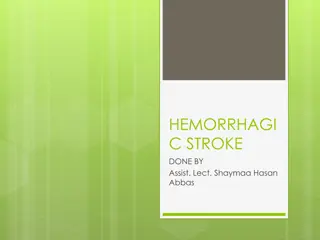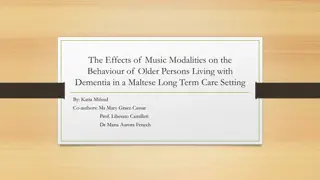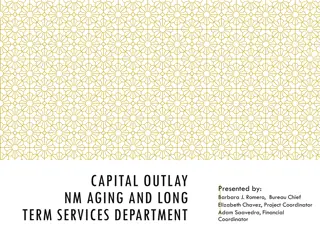Understanding Osteoporosis in Long-Term Care: Recommendations and Impact
Osteoporosis in long-term care can lead to a higher prevalence of fractures, impacting residents with excess mortality, morbidity, and economic costs. Learn about preventing fractures, assessing risks, and selecting appropriate therapies based on 2015 recommendations.
Download Presentation

Please find below an Image/Link to download the presentation.
The content on the website is provided AS IS for your information and personal use only. It may not be sold, licensed, or shared on other websites without obtaining consent from the author. Download presentation by click this link. If you encounter any issues during the download, it is possible that the publisher has removed the file from their server.
E N D
Presentation Transcript
Osteoporosis Canada Recommendations for Preventing Fracture in Long Term Care
Innovation & Education that Transforms Senior's Lives c E T Osteoporosis Canada Osteoporose Canada
On behalf of Osteoporosis Canadas Scientific Advisory Committee, we acknowledge: Alexandra Papaioannou, MD MSc FRCP(C) FACP Nancy Santesso, PhD MLIS BASc RD Suzanne Morin, MD MSc FRCP FACP Sid Feldman, MD CCFP FCFP Jonathan Adachi, MD FRCPC Richard Crilly, MD MRCP(UK) FRCPC Lora Giangregorio, PhD Susan Jaglal, BSc MSc PhD Robert Josse, MD BS BSc Sharon Kaasalainen, BScN MSc PhD Paul Katz, MD CMD Andrea Moser, MD MSc CCFP FCFP Hope Weiler, RD PhD Susan Whiting, PhD Angela Cheung, MD PhD FRCPC CCD PapaioannouA et al.CMAJ. 2015
Objectives Learn how to apply the 2015 Fracture Prevention Recommendations for frail older adults in long-term care Improve fracture risk assessment and identification of residents at high risk Learn how to choose non-pharmacological and pharmacological therapies for residents at high risk of fracture PapaioannouA et al.CMAJ. 2015
How common are fractures in older adults in long-term care?
Prevalence of fracture in LTC Prevalence of all fractures is higher in LTC Fracture rate for adults in LTC is 2-4 timesthat of similarly aged adults living in the community1 One third of older adults who experience hip fractures are residents in LTC2 Up to 30% of residents have vertebral fracture3 1Consensus Development Conference. Am J Med.1991 2Crilly RGet al. J Aging Research.2010 3RodondiA et al.OsteoporosInt. 2012 PapaioannouA et al.CMAJ. 2015
Impact of fractures in LTC Fragility fractures are responsible for excess mortality, morbidity, chronic pain, admission to institutions and economic costs1-3 Those with hip or vertebral fractures have substantially increased risk of death after the fracture2 Multiple vertebral fractures can cause significant pain, anxiety,depression, reduced pulmonary function and agitation4 1PapaioannouAet al. OsteoporosInt.2009 2IoannidisG et al. CMAJ. 2009 3Wiktorowicz ME. OsteoporosInt. 2001 4PapaioannouAet al. Am J Med. 2002 PapaioannouA et al.CMAJ. 2015
In women, a hip fracture leads to Future fracture 10% will re-fracture within one year1 53.5% died or developed new total dependence within 180 days.Function declined substantiallyafter fracture across all ADL domains2 Decreased quality of life Long-term care admissions Up to 18% enter LTC3 1-year 20% for individualsreturning to the community1 40% for thoseliving in LTC1 Mortality 1PapaioannouAet al. J SocObstet GynaecolCan. 2000 2Neuman M et al.JAMA Intern Medicine.2014 3Jean et al. JBMR. 2012 PapaioannouA et al.CMAJ. 2015
What is the goal of the Fracture Prevention Recommendations?
Reduce immobility, pain, transfers to hospital and improve quality of living of residents PapaioannouA et al.CMAJ. 2015
The proposed recommendations integrate falls and osteoporosis assessment taking into consideration lifespan, renal impairment and simultaneous risks of falls and fractures Recommendations consider various treatment strategies in addition to pharmacotherapy
How were the recommendations developed?
Using the GRADE Approach1 Balance of Benefits & Harms Values & Preferences Quality of the Evidence Resources Recommendation 1Balshem H et al. J ClinEpidemiol.2011 PapaioannouA et al.CMAJ. 2015
How can the recommendations be interpreted?
Interpreting the recommendations1 Implications Strong Conditional Recommendation we suggest Recommendation we recommend FOR Most individualsin this situation would want the recommended course of action, and only a small proportion would not The majority of individualsin this situationwould want the suggested course of action, but many would not PATIENTS/RESIDENTS FOR CLINICIANS Most individualsshould receive the intervention Cliniciansrecognize that different choices will be appropriate for each individualand that cliniciansmust help each individualarrive at a management decision consistent with his/her values and preferences 1www.gradeworkinggroup.org PapaioannouA et al.CMAJ. 2015
Guidelines intervention groups Recommendations for interventions to prevent fracture were developed for the following groups: Older residents in LTC at high risk of fracture Older residents in LTC not at high risk of fracture PapaioannouA et al.CMAJ. 2015
Ask the following questions on admission1 Determine How to assess?... Prior hip fracture have you ever broken your hip? Prior vertebral fracture have you lost height? If YES and >6 cm historically, order lateral thoracic and lumbar spine More than one prior fracture (excluding fractures of the hands/feet/ankle) have you had a broken bone after 50? If recently used systemic glucocorticoids and have had one prior fracture Are you using medications such steroids or prednisone? If identified as high risk and/or on osteoporosis treatment prior to admission have you been on osteoporosis medications? BMD is not required to identify residents at high risk of fracture 1PapaioannouAet al. CMAJ. 2010 PapaioannouA et al.CMAJ. 2015
If the answer is YES to any of the previous questions, the resident is considered at HIGH RISK for fracture PapaioannouA et al.CMAJ. 2015
What are the recommendations for calcium and vitamin D?
Considerations in supplementation Oro-pharyngeal Dysphagia 7 to 40% of LTC residents1 Commonin neurological diseases1 Variable ability to swallow liquids or mixedtextures Supplement options Pills: If can crush and mix with food(ensure small volume) If can t crush, consider liquid alternative or other route of administration Liquids: assess thickness, mix with foods(attention to small volumes) Specially fortified foodsmight help improve vitamin D intakes and should be considered where feasible in LTC One study achieved 488 132 IU/d vitamin D2 1Namasivayam& Steele, J NutrGerontolGeriatr2015; 2Adolphe et al, CanJ DietPrac Res 2009 PapaioannouA et al.CMAJ. 2015
Calcium For all residents, we recommend dietary interventions to meet the recommended dietary allowance (RDA) for calcium The RDA for people >70 years for calcium is 1200 mg daily (3 servings of dairy or dairy equivalents) PapaioannouA et al.CMAJ. 2015
Calcium For residents at high risk who cannot meet the RDA for calcium through dietary intake, we recommend daily supplements of calcium up to 500 mg For residents who are not at high risk of fractures and who cannot meet the RDA for calcium through dietary intake, we suggest daily supplements of calcium up to 500 mg, depending on resources and their (or their caregiver s) values and preferences PapaioannouA et al.CMAJ. 2015
Vitamin D For residents at high risk of fractures, we recommend daily supplements of 800 2000 UNITS vitamin D3 For residents not at high risk, we suggest daily supplements of 800 2000 UNITS vitamin D3, depending on resources and their (or their caregiver s) values and preferences PapaioannouA et al.CMAJ. 2015
What are the recommendations for exercise?
Exercise For residents at high risk of fractures, we suggest balance, strength and functional training exercises only when part of a multifactorial intervention to prevent falls This recommendationplaces a highvalue on avoidingthe small increase in falls which may occur amongindividualsat high risk of falls who participate in exercises,such as balance,strength and functional training For residents not at high risk, we suggest balance, strength and functional training exercises to prevent falls This recommendationplaces a highvalue on the probablysmall reduction in falls that is achievedwith exercise,as falls may lead to seriousinjuries.It also placeshigh valueon the otherbenefitsthat exercisecould provide. PapaioannouA et al.CMAJ. 2015
What are multifactorial interventions and recommendations?
Multifactorial interventions Any combination of interventions that are tailored to an individual s risk to reduce falls. Such interventions may include: medication reviews, assessment of environmental hazards, use of assistive devices, exercise,managementof urinary incontinence and educational interventions directed to staff For all residents, we suggest multifactorial interventions that are individually tailored to reduce the risk of falls and fractures PapaioannouA et al.CMAJ. 2015
What are the recommendations for the use of hip protectors?
Hip protectors For residents who are mobile and at high risk of fractures, we recommend hip protectors For residents who are not at high risk of fracture but are mobile, we suggest hip protectors depending on resources available and the residents values and preferences. PapaioannouA et al.CMAJ. 2015
What are pharmacological therapy recommendations for older adults?
We calculated effects of benefits and harms at one year or more and therefore, these recommendations apply to older persons with life expectancy greater than one year PapaioannouA et al.CMAJ. 2015
For HIGH RISK residents, we recommend.. Recommended Administration: Not to be crushed In the morning, on an empty stomach If resident can remain upright for 30 min after administration Alendronate 70 mg weekly 1stline therapy 35 mg weekly or 150 mg monthly Risedronate Risedronate DR can be taken immediately after breakfast and is not required to be taken firstthing in the morning on an empty stomach. NOTE PapaioannouA et al.CMAJ. 2015
Contraindications Alendronate and risedronate are not recommended for older persons with severe renal insufficiency (creatinine clearance <35 mL/min or <30 mL/min, respectively) PapaioannouA et al.CMAJ. 2015
For HIGH RISK Residents + Difficulty Taking Oral Medications, we recommend.. *This recommendation applies to the older persons who have difficulty taking oral medications due to dysphagia, an inability to sit up for 30 min, cognitive impairment or intolerance Denosumab* (60 mg subcut twice yearly) 1stline therapy ZoledronicAcid (5mg IV yearly) PapaioannouA et al.CMAJ. 2015
Contraindications Denosumab: While denosumab can be prescribed to residents with renal impairment, they are at higher risk of developing hypocalcemia ZoledronicAcid: Health Canada advises that caution is necessary for people who receive other medications that could affect renal function; CrCl should be monitored before and periodically after treatment. Appropriate hydration (500 mL of water) is necessary before and after treatment. This medication should not be administered in people with severe renal impairment (CrCl <30 mL/min) PapaioannouA et al.CMAJ. 2015
For HIGH RISK residents, we suggest... Although the benefits of teriparatide (in particular on vertebral fracture) probably outweigh harms of treatment, the cost of therapy restricts its access, and there may be a higher burden due to daily injections Teriparatide (20 mcg subcut daily) PapaioannouA et al.CMAJ. 2015
For HIGH RISK Residents, we suggest not to use There is moderate quality evidence for little to no reduction in fractures (in particular hip fractures) with etidronate. The cost is also high given the lack of important benefits. Etidronate The harms of raloxifene (e.g. venous thromboembolism and musculoskeletal events arthralgia, myalgia) probably outweigh the probable reduction in vertebral fractures and small reductions in hip and non-vertebral fractures Raloxifene PapaioannouA et al.CMAJ. 2015
Summary Determine risk of fracture on resident s admission Calcium and vitamin D supplementation Exercise, hip protectors and multifactorial interventions Pharmacological therapy for residents at high risk PapaioannouA et al.CMAJ. 2015
For access to recommendations and other tools and resources, please visit: Osteoporosis Canada at: www.osteoporosis.ca OR Ontario Osteoporosis Strategy at: www.osteostrategy.on.ca PapaioannouA et al.CMAJ. 2015
